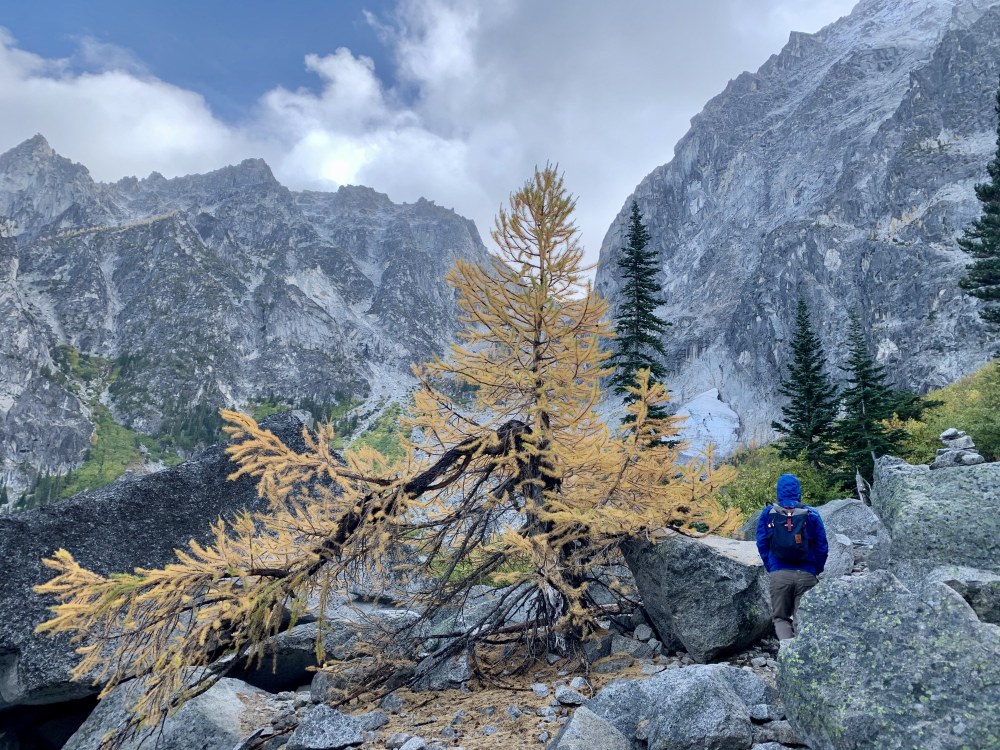
I grabbed my antique wooden snowshoes and headed for the door. Growing up in Michigan's Upper Peninsula, solo adventures every weekend were the norm as a kid. Winters were my favorite; a blanket of snow transformed the world into a black and white vintage photo from December through April. My brothers and I would skate on the lake and wander the empty woods surrounding our small cabin until dusk.
Upon arriving in the Pacific Northwest, I quickly learned that winter activities are a different beast than what I had in the tundra of Michigan's U.P. For my first trip in 2012, I grabbed my makeshift pack and met a couple of new friends from a Meetup group. I couldn’t afford proper hiking shoes, so I pulled on my bulky Midwest boots, thinking they were waterproof and would work just fine. I didn’t realize that a muddy slip-n-slide trail lay ahead.
Through trial and error I finally figured out what I needed for an enjoyable hike in the winter, but getting started was intimidating. As you look forward to a winter of hiking, here are a few tips to help you feel prepared. Keep in mind that these tips focus on low elevation hiking, and additional precautions are required for higher elevations when you’ll encounter snow.
Winter can be an exciting time to experience your favorite trails in an entirely new way. Don't let the cold weather stop you from getting out on the trail and enjoying the outdoors by being smart, safe, and prepared.
PACK THE 11 ESSENTIALS
Pack the 10 Essentials and a face mask. These will help you in a variety of emergencies. The most crucial part is understanding how to use each tool; learn more at mountaineers.org/ten-essentials.
OBSERVE WEATHER CONDITIONS
Weather can change quickly. I continually check the weather the week leading up to a hike, and have spent time developing a basic understanding of what to watch for during changing weather to stay safe.
AVOID HYPOTHERMIA
Even when it isn't -10 degrees, hypothermia can sneak up on you. Take extra gloves, and have a dry set of clothes in the car to change into after the hike. I also keep a thermos of hot tea in the car. There’s nothing better than dry socks and a hot drink when you get off the trail.
GPS DEVICE
I commonly rely on several apps to help me navigate the trail. Popular tools include AllTrails, Cairn, and Gaia GPS. If you're a member of The Mountaineers, take advantage of our Cairn and Gaia discounts. If you’ll be out of cell range, consider an InReach.
BRING TRACTION DEVICES
A couple of years ago, I was on a hike shortly after a rain when the temperature quickly dropped. I was soon dealing with an unexpected ice rink. Fortunately I had my micro spikes packed, and was able to slip them on and continue unabated. Even if you think you may not need them, you should carry hiking poles and micro spikes to help in a slippery situation.
DRESS APPROPRIATELY
This might be the most important lesson I learned as a new rainy season hiker. I had no idea that rain pants existed or what gaiters were, but I quickly learned that cotton is a big no-no. There are some great, inexpensive ways to invest in rain gear; check your local outdoor store or visit mountaineers.org/benefits for access to discounts.
TELL SOMEONE WHERE YOU'RE GOING
Regardless of the season, always to tell someone where you're going, when you’ll be back, and whom to call if you don’t get back in time.
This article originally appeared in our Winter 2021 issue of Mountaineer Magazine. To view the original article in magazine form and read more stories from our publication, visit our magazine archive.
 Emily Walbridge
Emily Walbridge